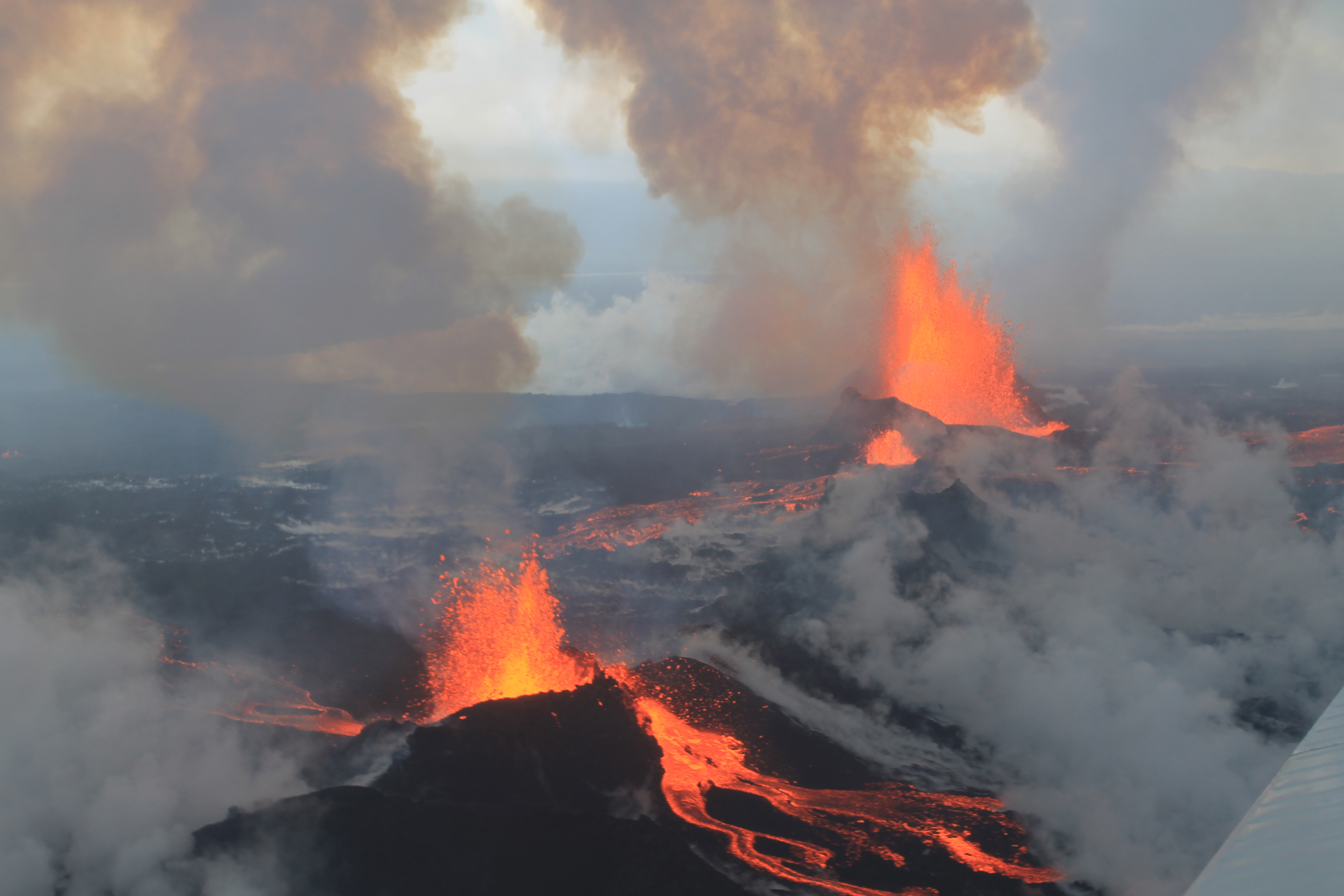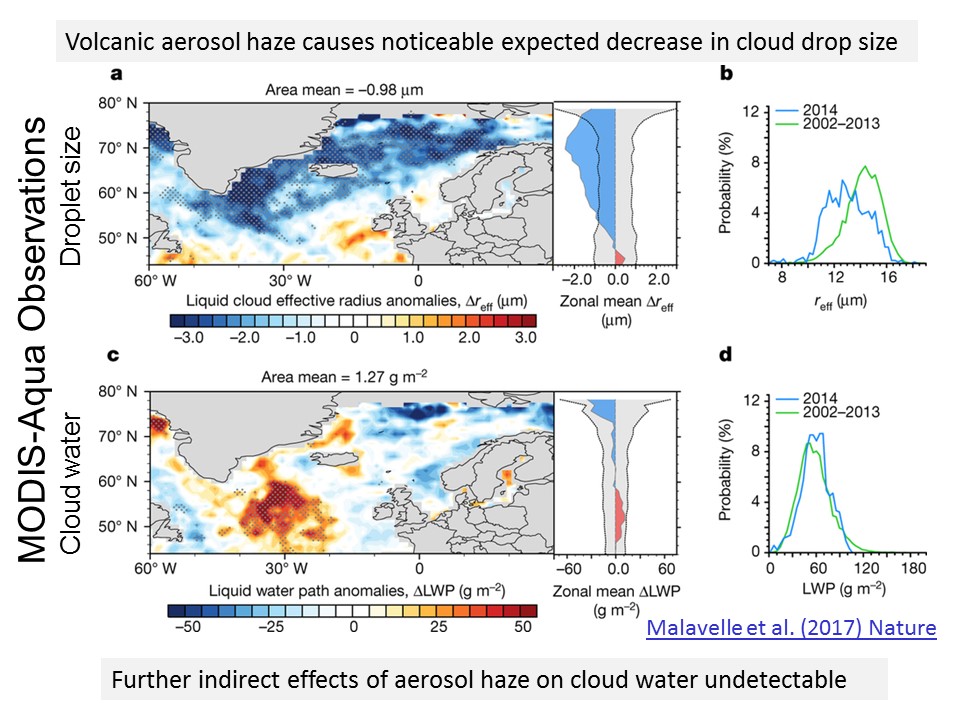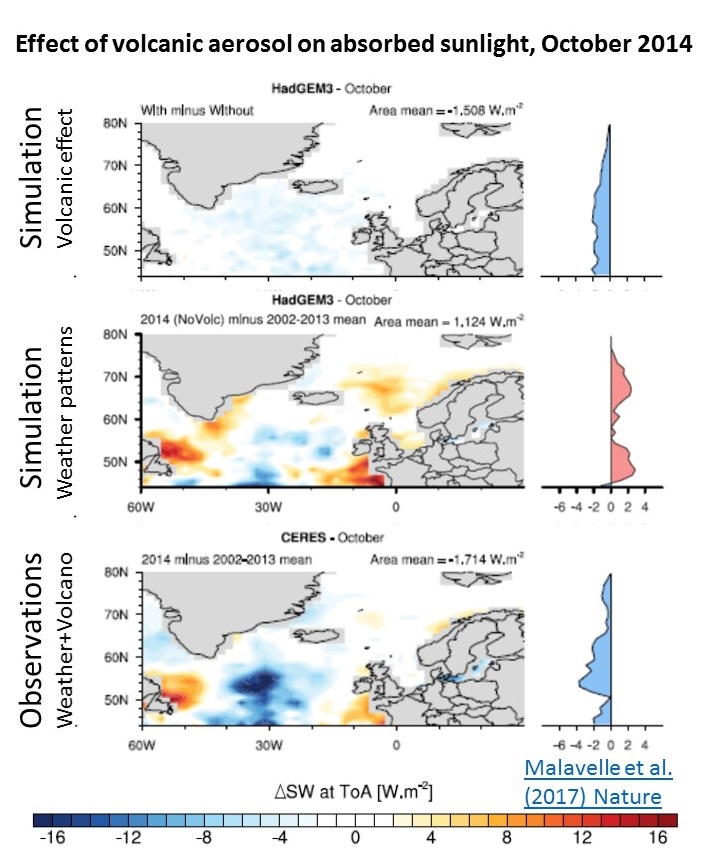June 2017:
Volcano reveals simpler than expected cloud-climate response to tiny aerosol particles
In new research a volcanic eruption is exploited as a natural laboratory to test how tiny aerosol particles in the atmosphere influence climate through their effect on cloud
Pollution haze presents a serious health problem for many regions, particularly large cities such as Beijing. Yet small pollutant particles in the atmosphere, or aerosol, also influence our climate through a "parasol effect" which shades the surface from incoming sunlight. Increased aerosol pollution has contributed a cooling influence on climate, without which the planet would have warmed even more than it has done in response to rising greenhouse gas concentrations, also the product of human activities. Quantifying the size of this cooling effect is a great challenge due to the complex interactions of aerosol particles with sunlight, particularly through indirect effects that make clouds reflect more sunlight back to space. Understanding and reproducing the correct aerosol-cloud effects in simulations is crucial for our ability to project future climate change as well as interpreting historical warming of climate.

In our study we use a novel approach to tackle the challenge of how aerosol cools climate. In September and October 2014 a massive volcanic fissure eruption in Holuhraun, Iceland (see Figure 1) continually injected vast quantities of sulfur dioxide into the atmosphere at rates exceeding European industrial emissions. It effectively mimicked a sulfate aerosol pollution haze, being an ideal natural experiment to test simulations of the cloud-aerosol effects on climate.
Satellite measurements covering the aerosol haze could identify a large region of smaller, more numerous cloud droplets (Figure 2, top). We also demonstrated that the UK Met Office Hadley Centre climate model (HadGEM3) was able to capture this effect, building confidence in understanding of aerosol interaction with cloud. However, further anticipated modifications in cloud properties such as the quantity of cloud water were not detectable above the month to month fluctuations in weather patterns (Figure 2, bottom).

Our findings are important since some climate models built by different teams of scientists and considered in the study produce a strong additional cooling effect from aerosol influences on cloud characteristics such as cloud water and longevity. Discounting simulations that producing unrealistically strong aerosol cooling effects offers a potential route for improving confidence in climate change projections.
There are a number of challenges to overcome in constraining the cloud-aerosol effect on climate. One limitation of the current analysis is that the expected aerosol cloud brightening signal is difficult to discern above the substantial month to month fluctuations in weather patterns when considering satellite data measuring the total sunlight reflected from the planet (Figure 3):

A further caveat is that the findings primarily apply for sulfate aerosol interaction with low altitude clouds in the North Atlantic. How generally the results apply globally to contrasting cloud and aerosol types is questionable. Preliminary analysis suggests similar effects were apparent for a contrasting case at Mount Kilauea, Hawaii during 2008 and for idealised simulations in which the volcano was transported to other regions of the globe and even back in time! Yet uncertainties in the satellite observations and the representation of fine detail depicted by the simulations plus the reliability of their input variables further confound understanding. Nevertheless, the results present tantalising evidence that the cloud-aerosol effect on climate is smaller than previously thought.
For further details, please see our publication (available from the authors):
Malavelle et al. (2017), Strong constraints on aerosol-cloud interactions from volcanic eruptions, Nature, 546, 485-491, doi:10.1038/nature22974.
Update: new results suggest an indirect volcanic aerosol effect on liquid water path is detectable when considering extratropical cyclones: McCoy et al. (2018) ACPD.
Richard P. Allan Location: Department of Meteorology (2U15)